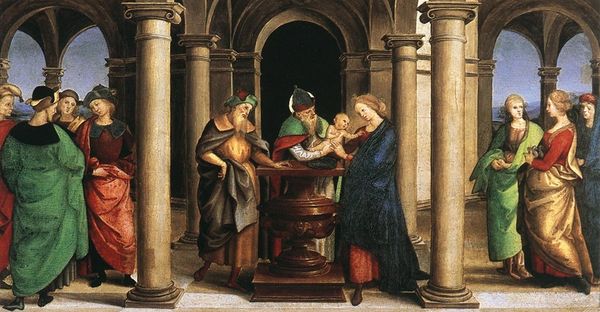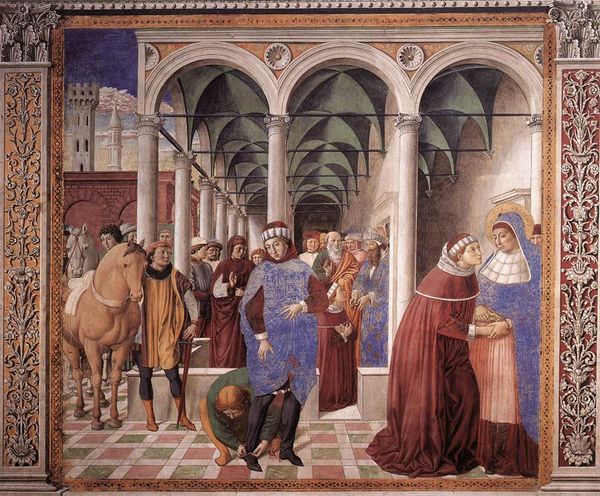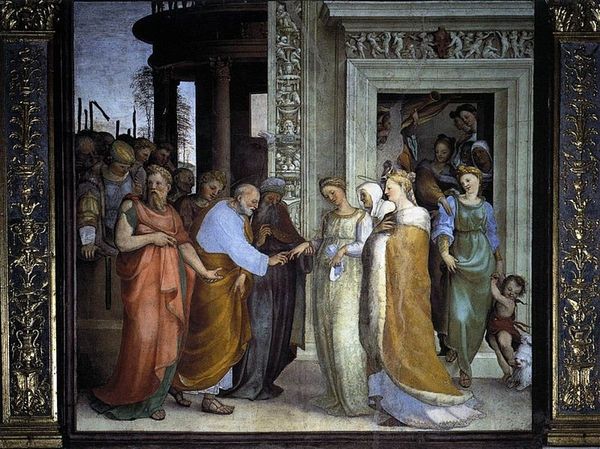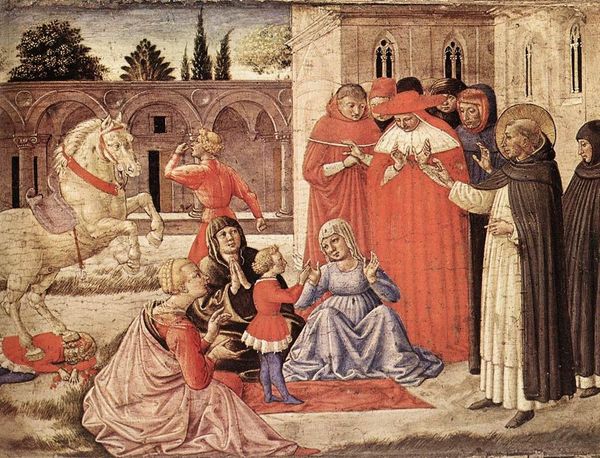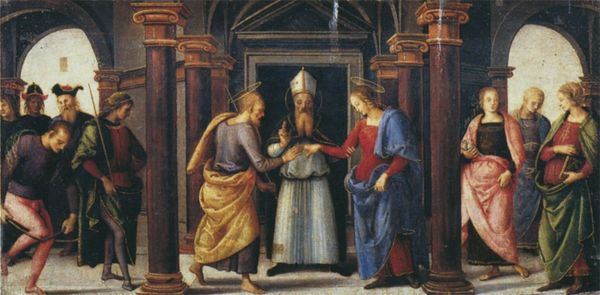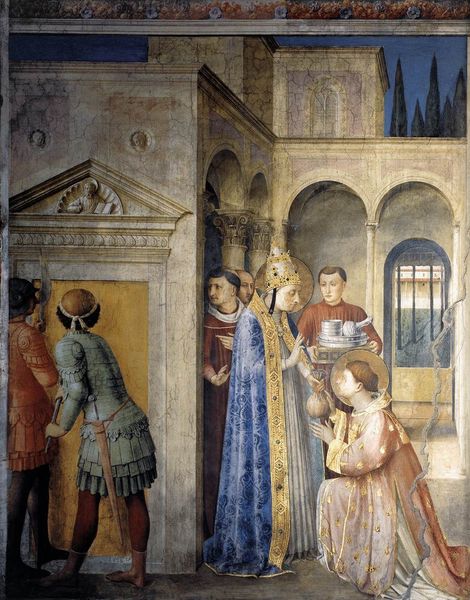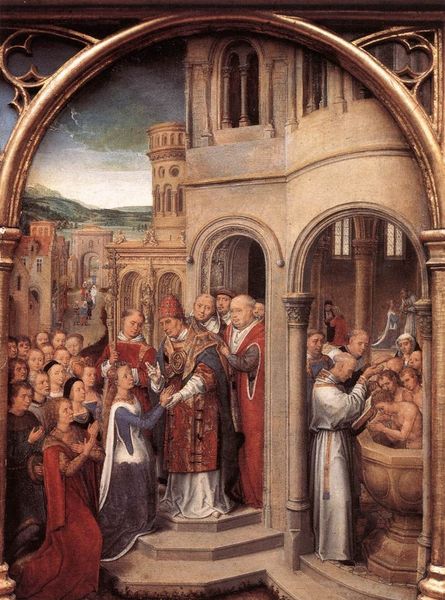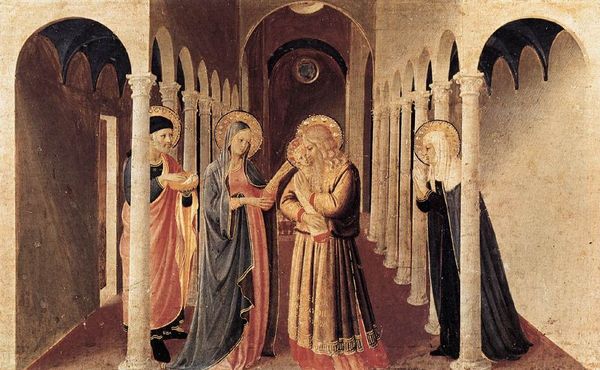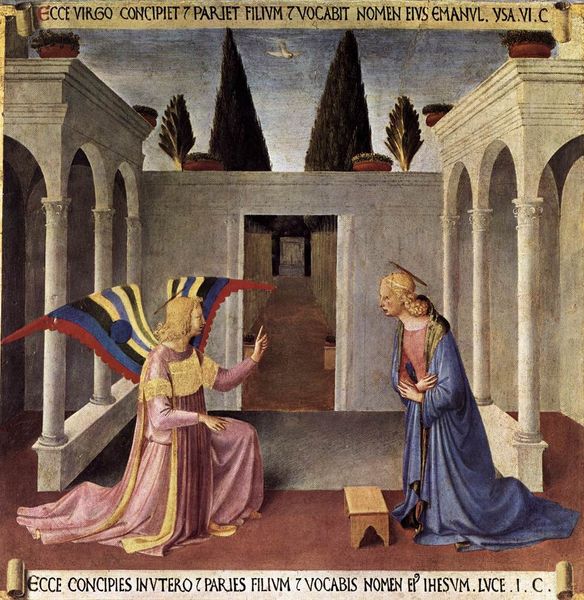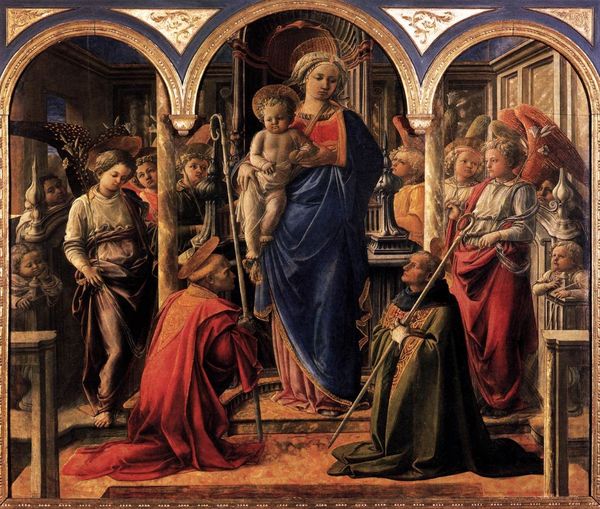
tempera, painting, fresco, photography
#
narrative-art
#
tempera
#
painting
#
figuration
#
fresco
#
photography
#
christianity
#
italian-renaissance
#
early-renaissance
#
christ
Dimensions: 38.5 x 37 cm
Copyright: Public domain
Curator: This is "Circumcision," a fresco by Fra Angelico, painted around 1452. You can find it at the Basilica di San Marco in Florence. Editor: Right off, I'm struck by the stillness, a certain tranquility despite, well, you know, what's happening to the baby. It's like a holy lullaby in paint. Curator: Indeed. The fresco, executed in tempera, is exemplary of the Early Renaissance style, emphasizing clarity, balanced composition, and a humanistic depiction of religious narrative. Notice how the figures are arranged within a defined architectural space. Editor: Totally! The architecture almost cradles the figures, a gentle stage for a not-so-gentle act. The colors are so delicate too, soft pinks and blues. It's a rather… civilised circumcision, if such a thing exists. Almost sanitized? Curator: Precisely, but perhaps this sanitization reflects the political aims of its patron. Commissioned for a monastic space, such a work seeks to encourage viewers toward piety, presenting theological tenets—here the fulfillment of the covenant—as part of a divinely ordained world order. It makes a moment of human pain… transcendent. Editor: That's it exactly! It's like the artist is saying, “Look, even the sharpest edges can be smoothed, turned into something meaningful." Kinda heavy for a baby’s first snip, right? I like how the men on the side carry the ewer and other things; are they portraits? The one at the right almost seems like the painter has captured somebody. Curator: It's quite possible. Portraiture began growing steadily in Florence and it is a common inclusion within Renaissance works to feature a patron or another dignitary of local importance. It's fascinating to consider these silent observers and their place within not only the scene, but also within Florentine society itself at the time of the painting’s execution. Editor: Thinking about it, those observers amplify the message. What feels like such a personal moment becomes very much a civic, a communal experience. You have to ask: who were the true audiences of this event, painted in such detail? It goes beyond simple religious edification, don’t you think? Curator: It speaks to the public role of faith and how images such as these reinforced specific theological and social viewpoints that have lasted across centuries. Editor: Fra Angelico asks hard questions here—softly—a feat in itself. A circumcision in pastels; it’s grown on me. Curator: A reminder that beauty can serve a multitude of functions in the service of larger powers, seen and unseen.
Comments
No comments
Be the first to comment and join the conversation on the ultimate creative platform.

